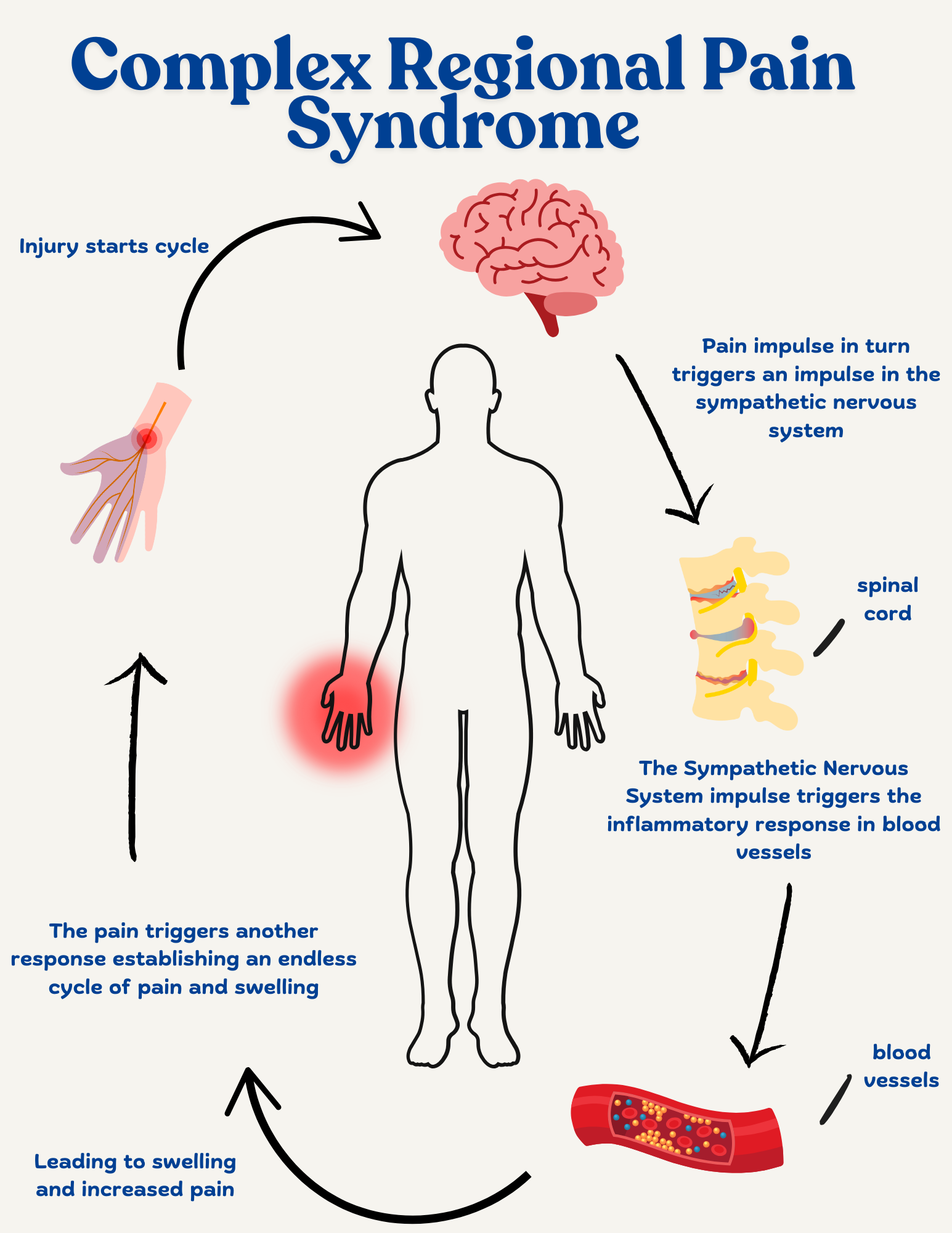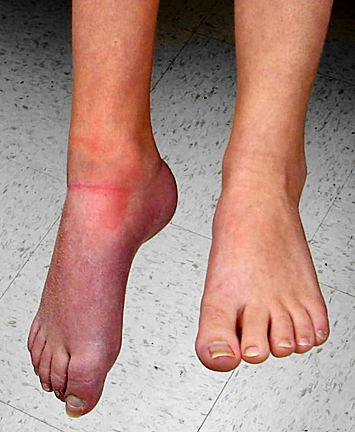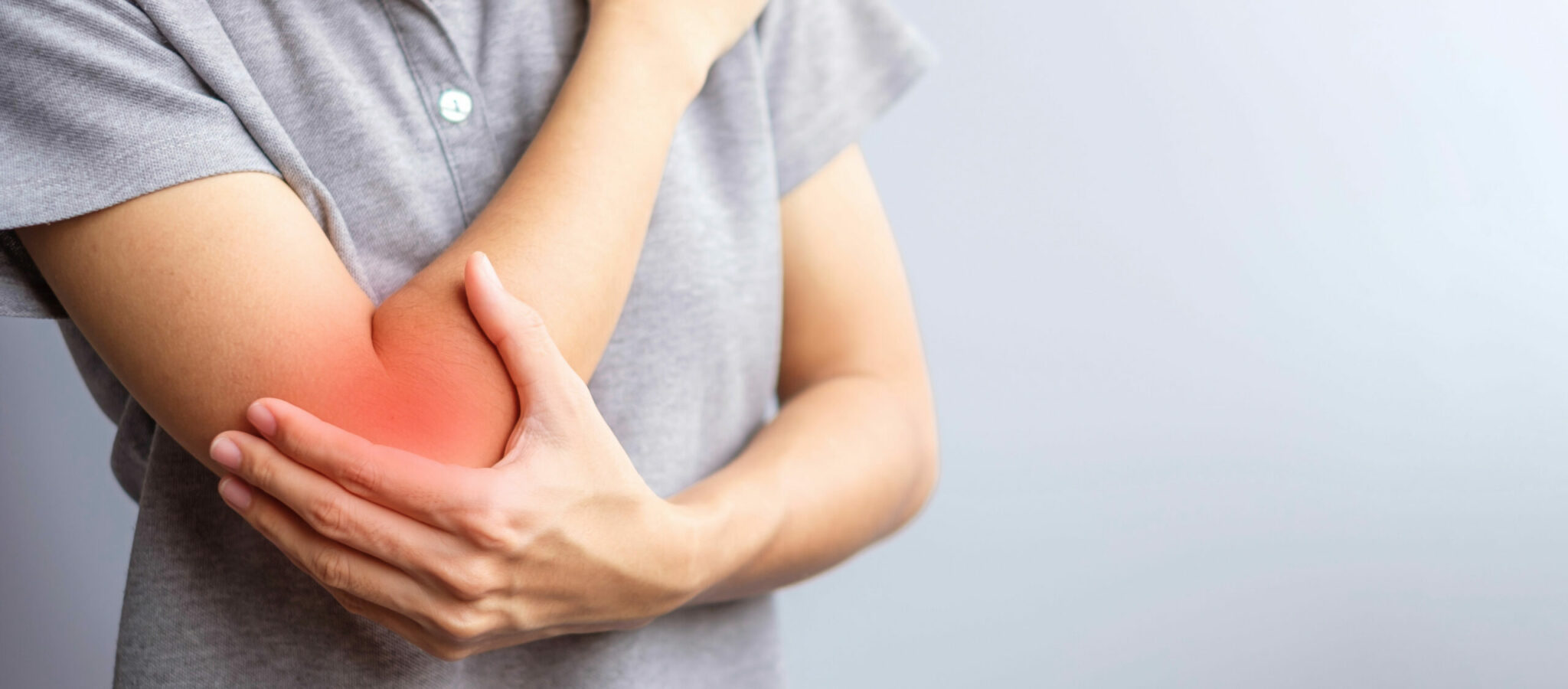Turning Silence into Solutions Through Comprehensive Resources for CRPS Awareness and Treatments
Contact Us
CRPS-I: no confirmed nerve damage, accounts for about 90% of cases. CRPS-II: associated with confirmed nerve injury, associated with 10% of cases

Adults between 30 and 55 years of age. Women are affected 3 times more commonly than men.

Approximately 15-20% of individuals with CRPS experience severe, chronic symptoms beyond a year.


Clinical: based upon four symptom/sign categories (sensory, abnormalities in skin color, temperature, and texture, swelling/regulation of sweat glands, and decreased motor function) and require that the patient reports one symptom in three of the four categories and displays one sign at the time of evaluation in two of the four categories
Diagnostic testing: Bone scintigraphy, plain film radiography, and autonomic testing are used when clinical features are atypical to support the diagnosis of CRPS and to exclude alternative causes of symptoms.

Pain, sensory sensitivity, rapid or no hair/nail growth, motor impairments, changes in skin color and texture, changes in skin temperature, autonomic symptoms, and swelling in the affected limb. Of these, pain is typically the most prominent and debilitating symptom.